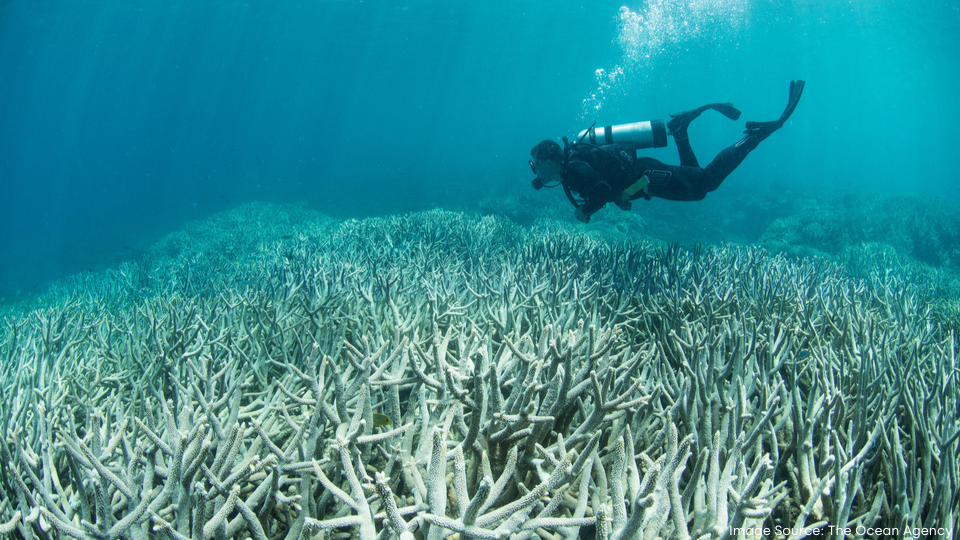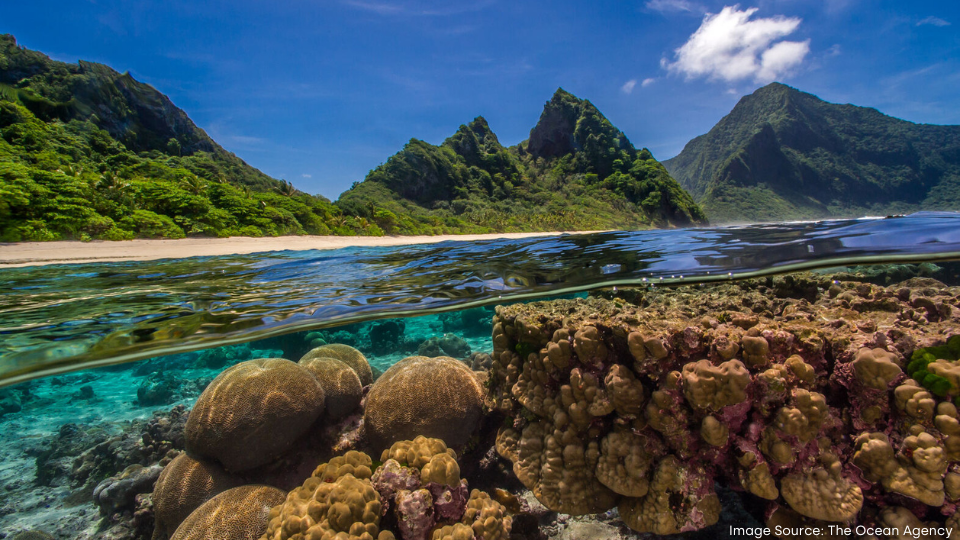The planet is experiencing the fourth global coral bleaching event on record. We explore what coral bleaching is, why it presents a major problem for reef restoration efforts, and how CORDAP is helping to supporting research on potential solutions.
NOAA and ICRI announced in March 2024 that we are amidst the fourth global coral bleaching event – the second to occur in the last 10 years, with reports of bleaching following across coral regions in the northern hemisphere in the boreal summer of 2023 to the southern hemisphere in the austral summer 2024. Since early 2023, mass bleaching has been confirmed in at least 53 countries, territories, and local economies.
Coral bleaching, triggered by rising sea temperatures, is threatening the health of reefs around the world and poses a significant issue for coral restoration efforts. “The only action able to avoid even more severe coral bleaching events is to mitigate climate change by reducing emissions to meet, or improve, the most ambitious of the scenarios of the Paris Agreement, to contain climate change at 1.5°C warming above preindustrial levels. Unfortunately, average ocean temperatures have been at record levels, nearly 1.5°C above preindustrial levels, every month already since March 2024.
“This is why CORDAP is investing in R&D projects that fund the best ideas for international teams to advance our capacity to conserve and restore corals, as heat waves will, otherwise, do away with years of restoration efforts as we have, sadly, witnessed along the past year” states Professor Carlos Duarte, CORDAP Executive Director.

What is coral bleaching?
Coral bleaching happens when corals lose their vibrant colours in response to a stressful event and is a visual indication of a reef’s declining health.
Most corals receive their colours from microscopic algae they host inside their bodies, which also provide the corals with food and oxygen.
Unfortunately, environmental stress events can disrupt the symbiotic relationship between corals and algae. When faced with a marine heatwave or elevated temperatures beyond their optimal range, corals expel their symbiotic algae. When faced with a marine heatwave or elevated temperatures beyond their optimal range, corals expel their symbiotic algae. As a result, corals lose their vibrant coloration, revealing their white skeleton and appearing, therefore “bleached”. This expulsion also deprives corals of their primary energy source, often resulting in coral mortality.
How long the process takes depends on the rate of warming. A temperature increase of just one degree Celsius for as little as four weeks can trigger bleaching, and the higher the temperature rises, the less time it takes.

Can corals recover once bleached?
Coral bleaching is not a death sentence. If temperatures don’t get much hotter or stay hotter for too long, then corals may potentially survive in a bleached state for a few weeks. This is especially true for those corals that are better at feeding on their own. Once conditions return to normal, the corals are able to re-uptake new microalgae, which aid in partial or complete recovery of the coral.
Unfortunately, under the current ocean warming scenario in which we are living, both the frequency and intensity of extreme thermal stress events are projected to further increase. This shortens the interval between bleaching events, giving corals less time to fully recover and therefore potentially contributing to even more widespread mortality.
Without the nourishment provided by the symbiotic algae, most reef-building corals cannot feed themselves as effectively and will eventually starve. The exposed skeleton will then quickly be colonized by other organisms and become fragile and break into rubble, dismantling the reef framework build over thousands of years that support living corals.
Organisms that rely on live corals for survival will then leave or starve. Given that nearly a quarter of all marine animal species is supported by coral reefs, this would lead to a huge loss of biodiversity and impact hundreds of millions of people around the world who rely on these ecosystems for their food and livelihoods.
What is CORDAP doing to help?
CORDAP is funding projects that focus on heat resilient corals. Understanding corals’ capacity to pass on heat tolerance to their offspring could potentially prove critical in the push to create viable populations.
Floating fluorometers and heat-tolerant algae
Finding new, non-invasive ways to determine corals’ heat tolerance using equipment that monitors fluorescence.
Creating a smart-decision framework for coral restoration
Developing a data-driven system that will help identify the best, most heat-tolerant corals to transplant and grow in nurseries for later reef restoration initiatives.
Identifying heat-resistant corals
Using in vitro fertilization-like techniques to reproduce corals in labs, tracking their genetics to learn whether heat-tolerant parents’ offspring are also more resilient to warming temperatures.
Editing genes to build more resilient corals
Editing the genomes of coral eggs released during spawning, modifying their DNA and inserting entirely novel genes that will improve thermo-tolerance.
Building capacity to deploy interventions around the world, with an emphasis in the global south, where opportunities are often limited.

Helping corals survive in a warming world.
“We know that corals, if they are given a chance, can be resilient,” explains Dr. Emma Camp, team leader of the Future Reefs Lab and a recipient of funding from CORDAP’s Coral Accelerator Programme 2022. “They can recover from stress events but the increase in intensity and severity we’re seeing really highlights that we must tackle climate change to ensure a future for coral reefs. We also need innovative science and research to try and increase our understanding, so we can come up with novel solutions to try and buy time and aid the resilience of corals so that they will exist for future generations.”
In 2023, the global heat content stored in the upper 2,000 meters of the ocean was the highest since records began 65 years ago and the global average sea surface temperature in March 2024 was also the highest recorded to date.
CORDAP-funded projects will also support the Global Biodiversity Framework’s target of restoring 30% of all degraded ecosystems, including marine and coastal areas.
Find out more about the work we’re funding around the world to help restore and conserve corals, and learn how you can help make a difference as part of #TeamCoral.
References:
Coral bleaching – Great Barrier Reef Foundation
https://climate.copernicus.eu/surface-air-temperature-march-2024
Images Source: The Ocean Agency


